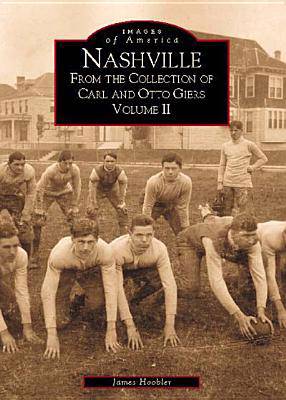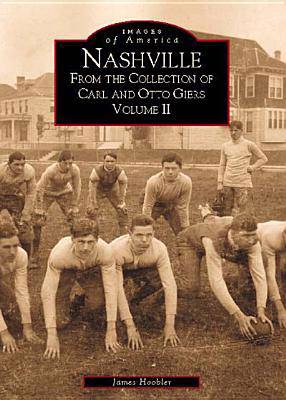
- Afhalen na 1 uur in een winkel met voorraad
- Gratis thuislevering in België vanaf € 30
- Ruim aanbod met 7 miljoen producten
- Afhalen na 1 uur in een winkel met voorraad
- Gratis thuislevering in België vanaf € 30
- Ruim aanbod met 7 miljoen producten
Zoeken
Omschrijving
Like many Southern cities, Nashville has undergone a dramatic transformation over the past two centuries, evolving from a simple
pioneering crossroads into a large cosmopolitan center with its citizens representing every nationality, race, and creed. The latter years of the nineteenth century proved especially momentous in the city's growth and development, and two visionary Nashvillians, Carl and Otto Giers, documented the many different elements of city life through their photographic talent.
In Nashville: From the Collection of Carl and Otto Giers Volume II, readers will journey to the Nashville of old and see the city through the artistry of the Giers' studio: a time when the city hosted some of the most recognizable and celebrated Confederate and Union officers, such as Nathan Bedford Forrest and Ulysses S. Grant, who both sat for studio portraits. Enduring the ravages of the Civil War, Nashville rebuilt itself and the Giers were there to record its rebirth, photographing everyday life against many different settings: from the city's graveyards, such as Calvary, Mount Olivet, and National Cemetery, to its poverty-stricken neighborhoods, to the elegant homes of the affluent, to the flourishing business district. Not just concerned with the routine, the Giers focused on capturing Nashville's history in the making, including portraits of state governors, such as William Gannaway Brownlow, Albert Smith Marks, and Robert Love Taylor, scenes of the Tennessee Centennial Exposition and the Tennessee Industrial Exposition, and the city's most-famous attractions, Belmont and the Hermitage.
pioneering crossroads into a large cosmopolitan center with its citizens representing every nationality, race, and creed. The latter years of the nineteenth century proved especially momentous in the city's growth and development, and two visionary Nashvillians, Carl and Otto Giers, documented the many different elements of city life through their photographic talent.
In Nashville: From the Collection of Carl and Otto Giers Volume II, readers will journey to the Nashville of old and see the city through the artistry of the Giers' studio: a time when the city hosted some of the most recognizable and celebrated Confederate and Union officers, such as Nathan Bedford Forrest and Ulysses S. Grant, who both sat for studio portraits. Enduring the ravages of the Civil War, Nashville rebuilt itself and the Giers were there to record its rebirth, photographing everyday life against many different settings: from the city's graveyards, such as Calvary, Mount Olivet, and National Cemetery, to its poverty-stricken neighborhoods, to the elegant homes of the affluent, to the flourishing business district. Not just concerned with the routine, the Giers focused on capturing Nashville's history in the making, including portraits of state governors, such as William Gannaway Brownlow, Albert Smith Marks, and Robert Love Taylor, scenes of the Tennessee Centennial Exposition and the Tennessee Industrial Exposition, and the city's most-famous attractions, Belmont and the Hermitage.
Specificaties
Betrokkenen
- Auteur(s):
- Uitgeverij:
Inhoud
- Aantal bladzijden:
- 128
- Taal:
- Engels
- Reeks:
Eigenschappen
- Productcode (EAN):
- 9780738506326
- Verschijningsdatum:
- 9/10/2000
- Uitvoering:
- Paperback
- Formaat:
- Trade paperback (VS)
- Afmetingen:
- 167 mm x 235 mm
- Gewicht:
- 299 g

Alleen bij Standaard Boekhandel
+ 69 punten op je klantenkaart van Standaard Boekhandel
Beoordelingen
We publiceren alleen reviews die voldoen aan de voorwaarden voor reviews. Bekijk onze voorwaarden voor reviews.











